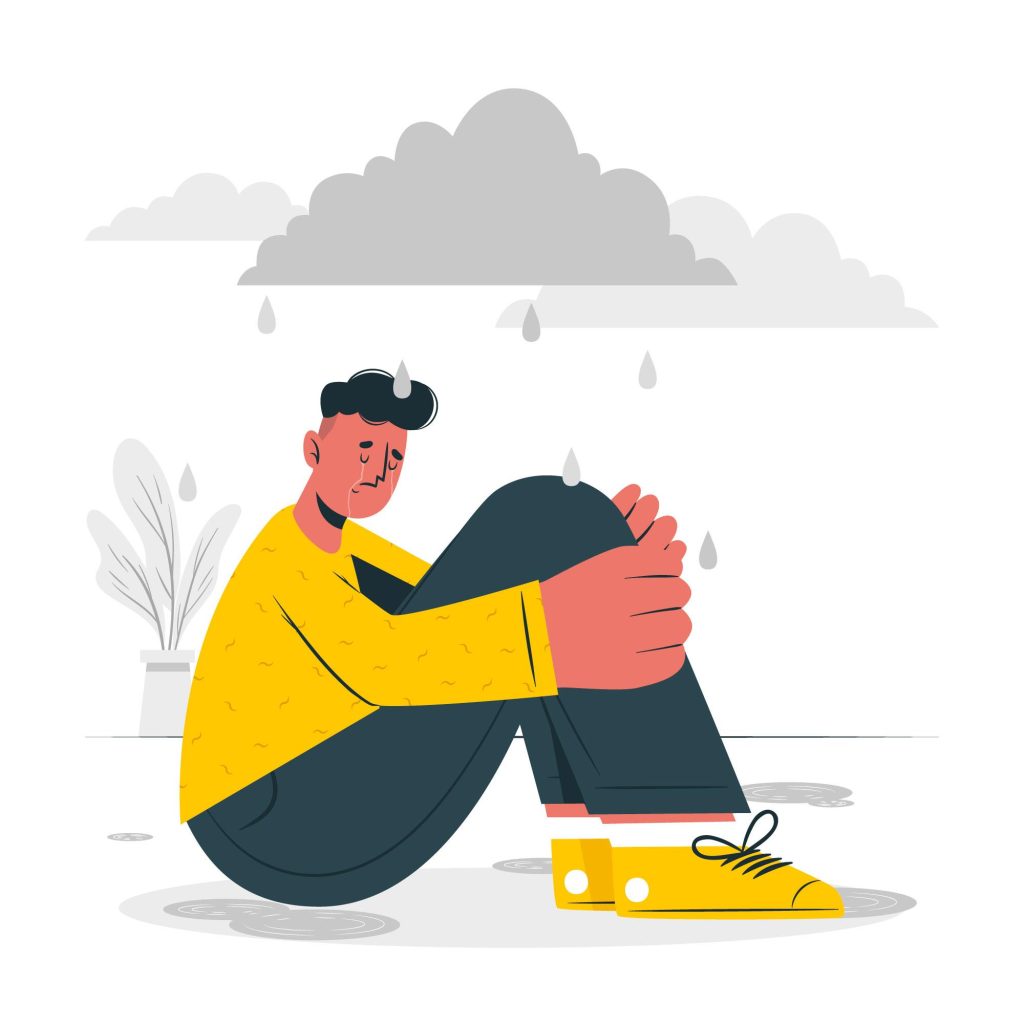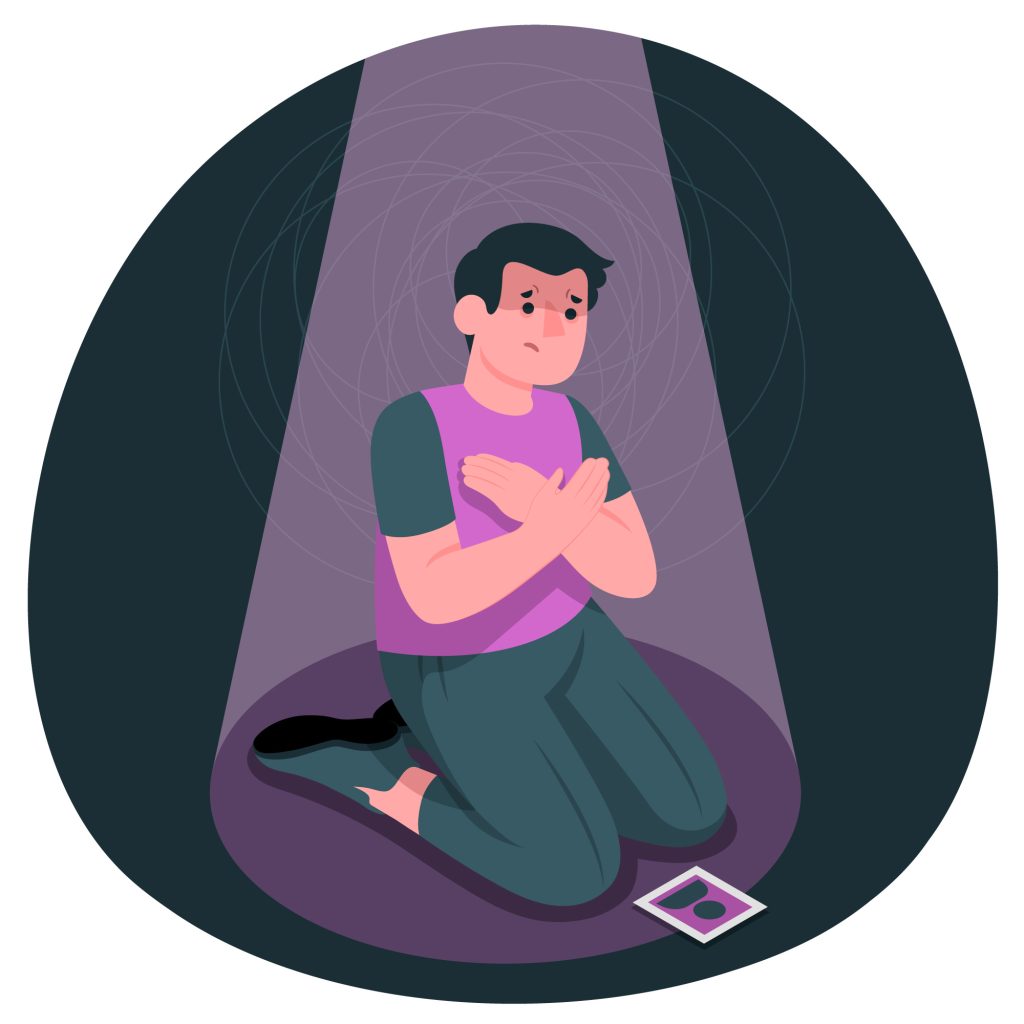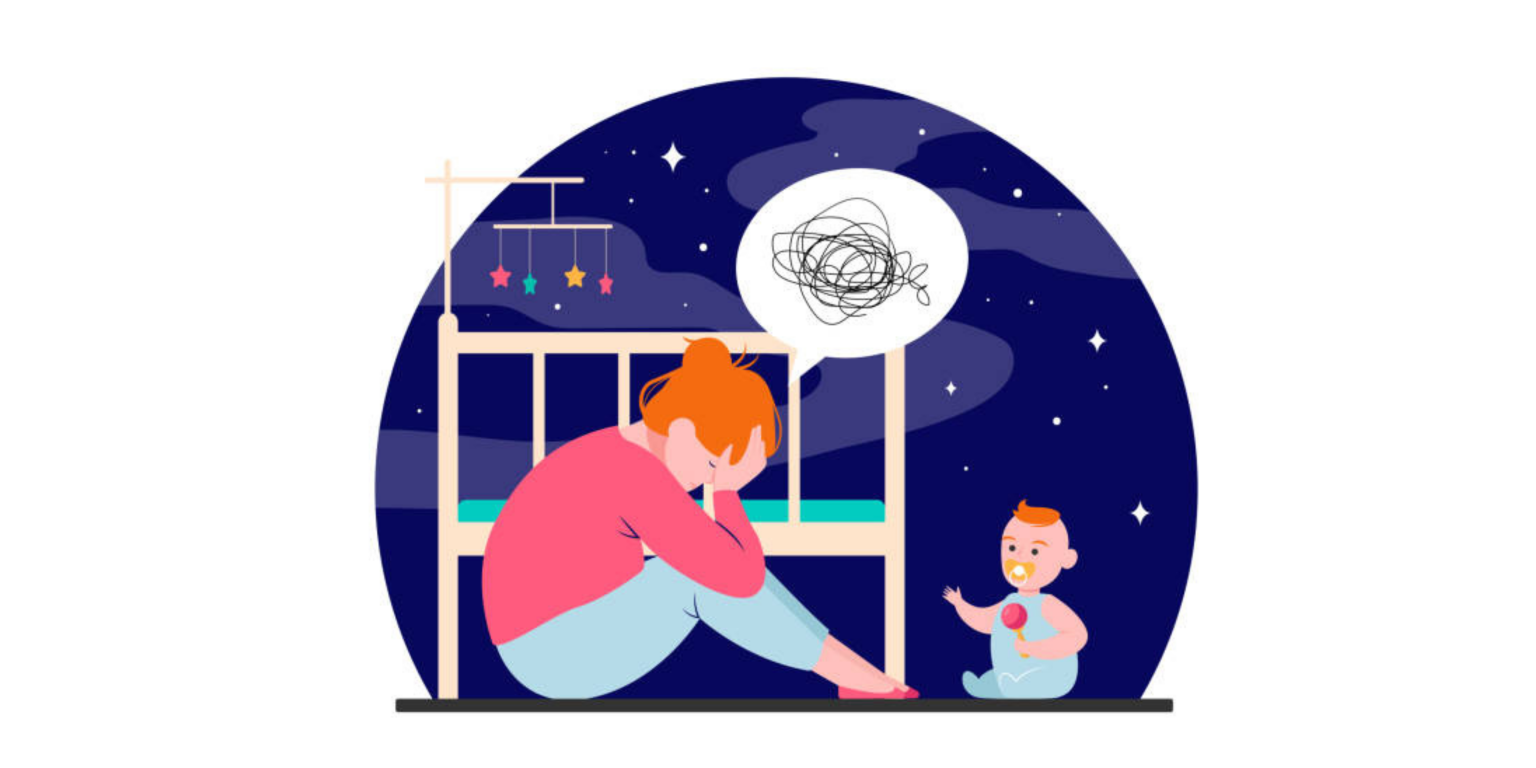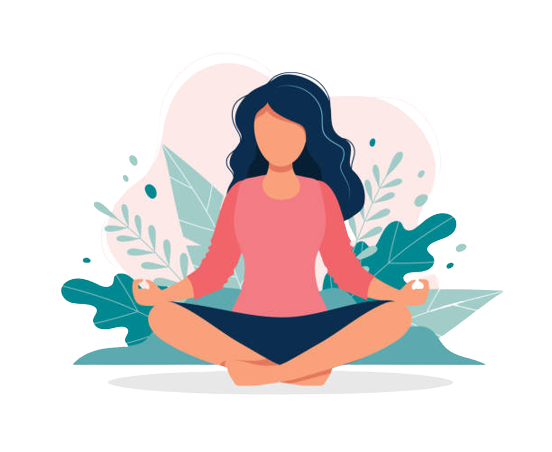
What Is Sadness?
Sadness is a basic human emotion. It’s a natural response to situations that cause emotional, psychological or physical pain. You can feel happy, angry, joyful, and a plethora of other emotions. Same goes for sadness, it’s real and a part of life. There’s nothing unusual about feeling sad. You may also feel sad for no reason, and that is normal too.
Sadness can coincide with other feelings such as stress, grief, anxiety, anger or hopelessness.
How Sadness Is Felt In the Body

We can use different words when referring to sadness. For instance, agony, dismay, anguish, distress, unhappiness, dejection, sorrow and many more. Sadness also changes how you feel in your physiology. Perhaps you may have a headache or a stomachache, or you might also have trouble going to sleep when you are experiencing sadness.
When you experience sadness, you may get teary-eyed, frustrated, grumpy, bored or just eager to avoid or may even disconnect with people.
The Society's Perception Of Sadness
Sadness is a healthy emotion. Although it doesn’t come under the list of ‘comfortable emotions’, a lot of us do our best to avoid it. Since sadness is not culturally accepted, witnessing it in others and ourselves can get challenging.
The last few decades has promoted happiness as a normal state of being – something that we all should aspire to be. We’ve been encouraged to diligently work on acquiring happiness in all aspects of our life. On the other hand, we’re advised to conceal sorrow and work on hastily eliminating it rather than dwelling on feelings of sadness or melancholy.
The above understanding of normal does not allow us to sit with our sadness and understand what it is trying to communicate to us.
Possible Reasons For Feeling Sad

Life is filled with situations that make people sad.
- Experiencing issues or troubles at home. For instance, family feuds, skirmishes or domestic violence
- Feeling pressured at school or work
- Moving away from home – relocating or migrating to a new city or country
- Losing a loved one or a dear friend
- Getting diagnosed with an illness, caring for someone who is unwell or in a critical condition
- Struggling with financial issues
- Grappling with changes in thoughts like getting self-critical, or learning new information on subjects like poverty, inequality or climate change
Sadness doesn’t have a clear path or a pattern of inheritance in families. Nonetheless, some of us may be genetically predisposed to sadness and that’s perfectly okay. In case you are one of them, you may find yourself getting twirled in the cycle of sadness when triggered with difficult life events.
When you face situations that overwhelm you, it’s possible to get entangled in negative thoughts. These very thoughts can push you further into a shell aggravating your sadness. Here are some ways you can get in touch, explore, and ultimately learn how to manage your sadness.

Are your anxieties holding you back?
Counseling can be a great tool for you to manage and overcome your anxiety and lead a happy, stress-free life.
We are here for you.
How To Deal With Sadness

Normalising Sadness
Sadness, unlike other emotions, unfortunately comes with a bad reputation. No one really wants to talk about it. We’re so stuck in the narrative of happiness that everybody craves for it and abstains from feeling sad. You can be a self-confessed optimist. But being optimistic doesn’t guarantee happiness all the time. You can be sad – but you can also be a person who is optimistic at the same time. Sadness is important as it connects you to yourself.
Myths around the world lead us to believe that sadness is attributed to being weak. For instance, when you are feeling sad and are brave enough to verbalise or show it, you are told not to ‘stew’ or ‘wallow’ in it. In other words, even when you want to, you’re discouraged to feel sad.
If you were raised in a family where it wasn’t safe to feel sad because you were criticised as being needy, you might judge your sadness and brush it aside. It results in you suppressing this vital emotion. A person may distract oneself from genuinely feeling sad. An individual may push it away with whichever manoeuvres the mind, body, and the brain can take to avoid any emotional discomfort.
Sadness helps in understanding what’s happening within you and lets you process your feelings. For this reason, it’s a very important emotion. There’s nothing weak about feeling sad. There are no labels around sadness, it just is!
Recognising and Allowing Yourself to Feel Sad
Sadness comes with a message of its own. ‘Feeling’ your sadness is essential as it tells you what’s missing. In other words, it conveys to you that there’s something that’s not currently present in your life. Often when you’re feeling sad, you’ll realise that your energy levels are depleting and it’s a task to get back up and re-engage. Sadness can do this to you.
During times like these, your mind forces you to instantly fix what feels wrong and look for what’s missing. When your ‘fixing mind’ doesn’t give you what you need at that moment, it causes frustration and in turn leads to more sadness.
How can you recognise sadness in yourself? When you’re aware of triggers that make you sad, then know that it’s time to feel sad. Feeling sadness isn’t pleasant. However, by just letting yourself know that you’re sad by either saying “yes” or a simple nod when you feel a rush of sadness is a good way to begin. Acknowledging your emotion in this manner makes it easier to access it.
You can now fully feel sadness without judging or analysing it. (This part doesn’t come easily. It takes practice to learn to recognise physical sensations with the experience of sadness).
Instead try and focus on your sadness and see what it is about. Any reasons come to mind or is it trying to convey something to you? Take a moment and be with your sadness, and try to get in touch with it.
Regulating Sadness Through Mindfulness
Mindfulness is an effective way to feel sadness by focussing the mind in the present moment. By being mindful, you can learn to allow yourself to observe emotions as they rise without trying to change them or getting caught up in their stories. For instance, thinking about children growing up, friends who you care about moving on or a family member’s illness. The idea here is to simply observe what’s happening around us and what we ourselves are thinking, feeling and doing.
Thoughts – Sadness isn’t about trying to get rid of the feeling but accepting it for what it truly is. So, when it starts to manifest in thoughts, you can gently observe it like a bystander. When you do this, you create some more space between your thoughts and yourself. For instance, if it’s a thought that saddens you – you note it – verbalize it by saying, ‘‘I am feeling sad because I got rejected from that job offer.’’
Once you say it out, you can go ahead and accept that it is okay to have this thought. When you’re able to verbalise your thoughts, you can choose to then stay with them and let it pass. A plethora of thoughts might come up. Allow them to come and go. Witness them like an impartial bystander. There’s no need to be attracted or repulsed by your thoughts. If you engage and try to decipher them during this time, you may end up believing your thoughts to be true. That’s why it’s essential to remember, you are not your thoughts.
Simply, let them come and stay with them.
Eventually, after the thought fades away, you can return to your breath and anchor yourself back in the present moment.
A guided breath meditation practice to help you stay with your thoughts during sadness.
Here’s an added video resource to support you through sadness.
Body – Paying attention to the physical sensations of sadness can help you understand which part of the body needs emotional tending. Take as much time you need when checking in with yourself. Accommodating feelings of sadness is a process that cannot be rushed. As a minute goes by, try and focus on the sensations and see where in your body sadness resides. Observe the feeling without any judgments. You can continue breathing while mindfully noticing where your sadness is present.
You may feel sadness in your eyes as they become tearful, or your chest may feel constricted. You may feel it in your legs or stomach as heaviness or any other sensations.
A good way to assess sadness in your body is to ask yourself, “Where am I feeling sad in my body?” Then, fully allow yourself to witness all the areas that feel unsettled, knowing this is me feeling sad
A helpful video of feeling and watching pain but not getting consumed by it.
Let it out – Very often sadness manifests in tears. If you observe your eyes welling up, let them. Research suggests that toxic chemicals are released via tear ducts as a person cries. Therefore, rather than holding on to the urge of crying, be receptive to releasing them. Crying can be extremely therapeutic. You’ll also notice feeling better after you’ve cried.
Sometimes sadness cannot be completely processed as there are other emotions that first need compassion and support. For instance, losing a parent or spouse with whom you’ve had a difficult relationship. Feelings like anger, guilt, shame may show up at surface level if you’ve had complicated or mixed feelings towards that specific individual. This makes sadness harder to accept and process.
Allow yourself to feel sad with yourself or with someone you trust. This is good for your physical and emotional health. Ignoring sadness leads to stress in the body and mind. Painful as it may seem, but experiencing sadness makes you grow as a person. You’ll feel better once you’ve let yourself feel sad.
How Therapy Can Help You Process Sadness

Therapy can be a great option for you if you want to understand and process your sadness with the help of a mental health professional. In therapy, you will have the chance to learn your potential triggers, origin of your sadness, and helpful coping strategies to manage your sadness.
Sadness can sometimes be a heavy emotion, and opening up to another individual about your pain can be difficult. However, therapy can offer you a safe space to share these difficult emotions and process your sadness and study ways to accept it.
The therapist can guide you to pick up the skills necessary to ride the waves of sadness and face them with courage instead of looking away. Over time, you will learn more about these waves and how to ride them by yourself and make it safely to the shore.
Therapy can take time to show significant results. But it can help you understand yourself a little more with each day.
Remember, everybody feels sadness at some point.
If you feel sadness persist for more than two weeks, in that case, reach out to a mental health professional.
Frequently Asked Questions
Sadness is a normal human emotion that everyone experiences from time-to-time. The main characteristic about sadness is that it goes away with time and doesn’t impair your daily functioning.
Depression on the other hand, is a disorder that includes feelings of sadness and hopelessness for prolonged periods of time. It affects multiple areas of your life, such as the emotional, social, physical, and cognitive aspects. While sadness may be related to a particular event, depression may not be attributed to one, single issue. It requires professional support.
If you feel like your sadness isn’t going away with time, and starts impacting multiple areas of your life, seeking help is always a good idea.
The duration of sadness, like other emotions, can vary greatly across people. Usually, sadness goes away with time. However, if your sadness persists over time and hampers your usual functioning and health, it is best to consult a mental health professional.
Yes, sadness also has its benefits. For instance, being sad helps you become more understanding, empathetic towards others. It helps us understand our triggers and builds strength and resilience.
About the Author
This article was written by Firdaus Moraes, Counselor at Inner Space. This post was consulted & approved by professional therapists practicing online therapy and counseling.
Ask a Therapist
If you are interested to know more about sadness and other mental health topics, ‘Ask A Therapist’ is a platform for you to ask your questions related to Mental Health, Mindfulness & Emotional Well-Being to our team of qualified Therapists.





